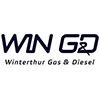 WinGD originated from the diesel engine business of Sulzer Corporation in Winterthur, established in 1893 when the Sulzer Brothers signed an agreement with Rudolf Diesel for his new engine technology.
WinGD originated from the diesel engine business of Sulzer Corporation in Winterthur, established in 1893 when the Sulzer Brothers signed an agreement with Rudolf Diesel for his new engine technology.
In April 1997, New Sulzer Diesel Ltd. merged with Wärtsilä Diesel Oy to create Wärtsilä NSD Corporation which later became Wärtsilä Corporation. The Swiss company, Wärtsilä Switzerland Ltd., responsible for the low-speed, two-stroke engine within Wärtsilä, was merged with China State Shipbuilding Corporation (CSSC) in early 2015 and renamed Winterthur Gas & Diesel Ltd. (WinGD). In 2016, Wärtsilä Corporation transferred its remaining shares of WinGD to CSSC making WinGD 100% owned by CSSC.
The engine brand was changed from 'Wärtsilä' to ‘WinGD’. Today WinGD supports its engines with state-of the-art digital technologies, training and warranty services. More info

 Teline V
Best News Template For Joomla
Teline V
Best News Template For Joomla

 Teline V
Best News Template For Joomla
Teline V
Best News Template For Joomla